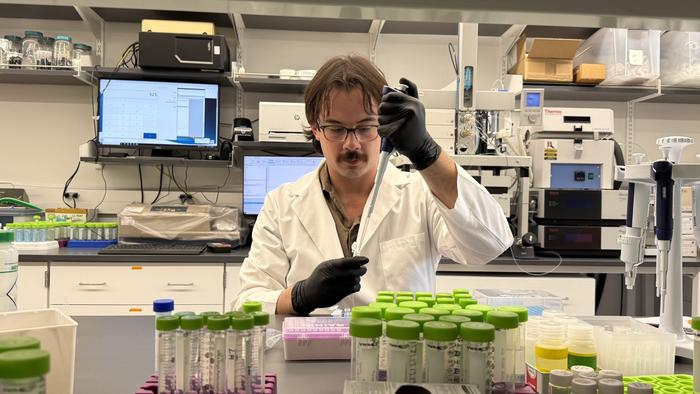Duke University researchers have solved a long-standing mystery about the source of high levels of PFAS contamination in water sources in North Carolina’s Piedmont region.
By sampling and analyzing sewage in and around Burlington, researchers traced the source of the PFAS contamination to a local textile manufacturing plant.
The source remained hidden for years because the facility did not emit PFAS in a regulated and monitored chemical form.
Instead, they found that solid nanoparticle PFAS “precursors” break down into the chemicals that current tests are designed to detect.
“We have some of the most sophisticated equipment in the world to analyze PFAS, but we weren’t able to detect PFAS until we dramatically changed our approach,” said Lee Ferguson, a professor of civil and environmental engineering at Duke University who led the study.
“Sometimes we don’t know what we don’t know. There are lessons to be learned about analytical blind spots when looking for new PFAS in the environment.”
Very high levels of PFAS found in waterways across North Carolina
PFAS became a hot topic in North Carolina in 2015, when an EPA study found high concentrations of GenX and other PFAS in the Cape Fear River.
The discovery set off a domino effect, with study after study finding PFAS contamination in places it shouldn’t be, including Wilmington’s public water supply and hundreds of local wells.
One example of unacceptably high PFAS levels was the town of Pittsboro, North Carolina. Initial results from a statewide testing network showed the contamination likely came from the upper reaches of the Hoh River, which supplies the town’s drinking water. This led the researchers to Burlington’s sewage treatment plant, which released treated water into the river upstream from Pittsboro.
Confusingly, tests showed much higher levels of PFAS coming out of the facility than entering the facility. This indicated that PFAS precursors, which do not show up during routine testing, were entering the plants and being transformed during processing.
Mr Ferguson explained: “As soon as we stopped that process, measurable PFAS levels in the wastewater dropped significantly.
“However, the precursors still enter the facility, concentrate in sludge, and eventually spread to agricultural fields, where they transform over time into regulated forms of PFAS. We needed to find the source.”
Burlington’s sewage treatment was accelerating PFAS contamination
Researchers found that these precursors were released into the sewer system at concentrations of up to 12 million parts per trillion. That’s about 3 million times the Environmental Protection Agency’s drinking water regulatory limit for certain types of PFAS.
Precursors typically degrade slowly over time into regulated PFAS types, but Burlington’s atypical wastewater treatment practices were accelerating that change.
These chemicals are particularly concentrated in sewage sludge and the resulting biosolids commonly used as fertilizer in the region, and the findings indicate that PFAS contamination will continue to leach into the region’s soils and waterways for decades to come.
The Clean Water Act: Lowering PFAS Levels for a Healthier Future
In addition, our colleagues in North Carolina State University’s Department of Textile Engineering, Chemistry, and Science provided samples of water- and stain-repellent fabric treatments similar to those used by textile manufacturers that drain into the Burlington sewer system.
The results from that sample were a near-perfect match to what the team found in wastewater from a particular manufacturer that was being discharged into the city’s sewage system.
With this information in mind, the City of Burlington worked with textile manufacturers to utilize pretreatment authority under the Clean Water Act to modify their processes and reduce the concentration of these nanoparticles.
Since then, the amount of PFAS precursors entering Burlington’s wastewater treatment facilities has decreased by orders of magnitude.
This reduction in PFAS contamination levels is a strong indicator that these problems can be addressed at their source, rather than through new treatment processes that remove difficult-to-degrade PFAS molecules.
However, the mystery has not yet been completely solved. “We don’t really understand how long it takes for these PFAS precursor nanoparticles to transform in wastewater and biosolids and permeate into the surrounding environment,” Ferguson said.
He concluded that “more funding and research is needed to fully understand this field.”
Source link

